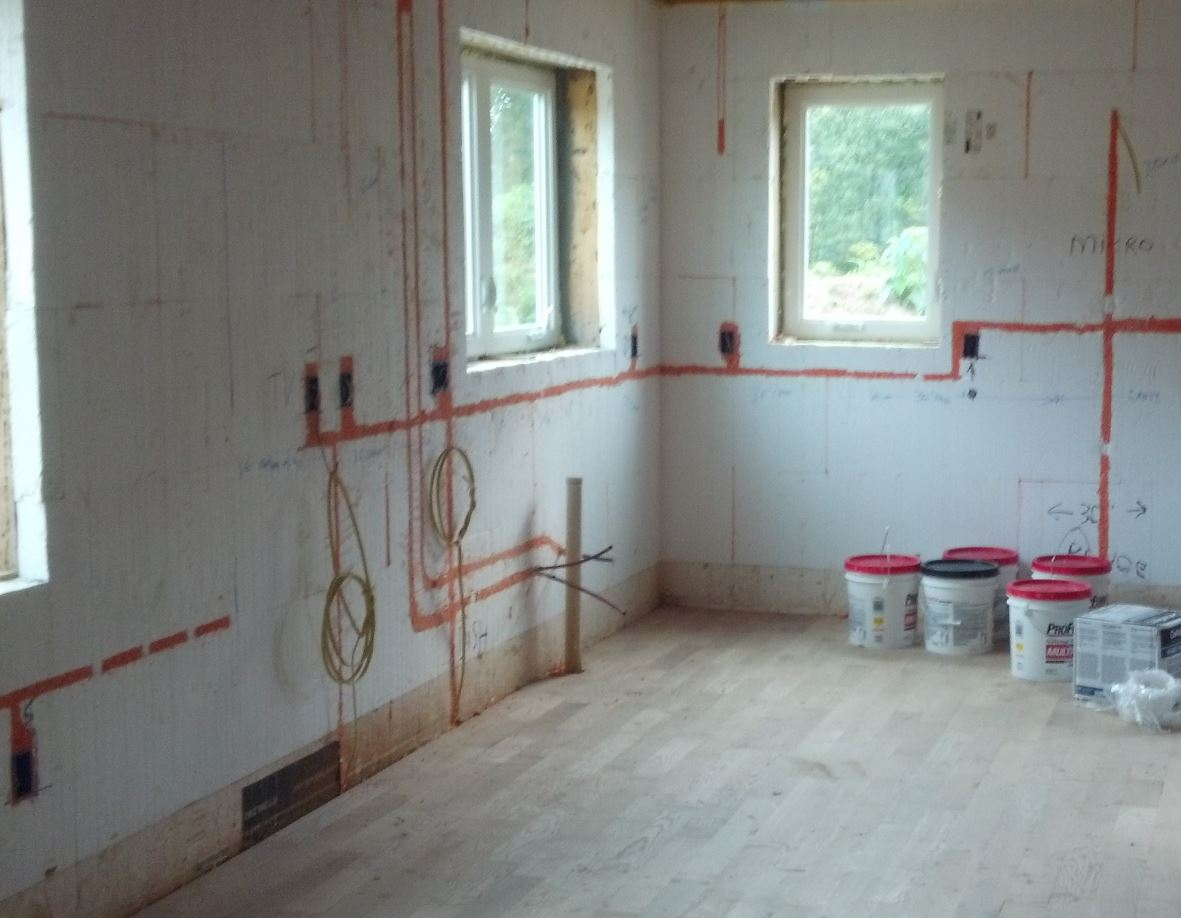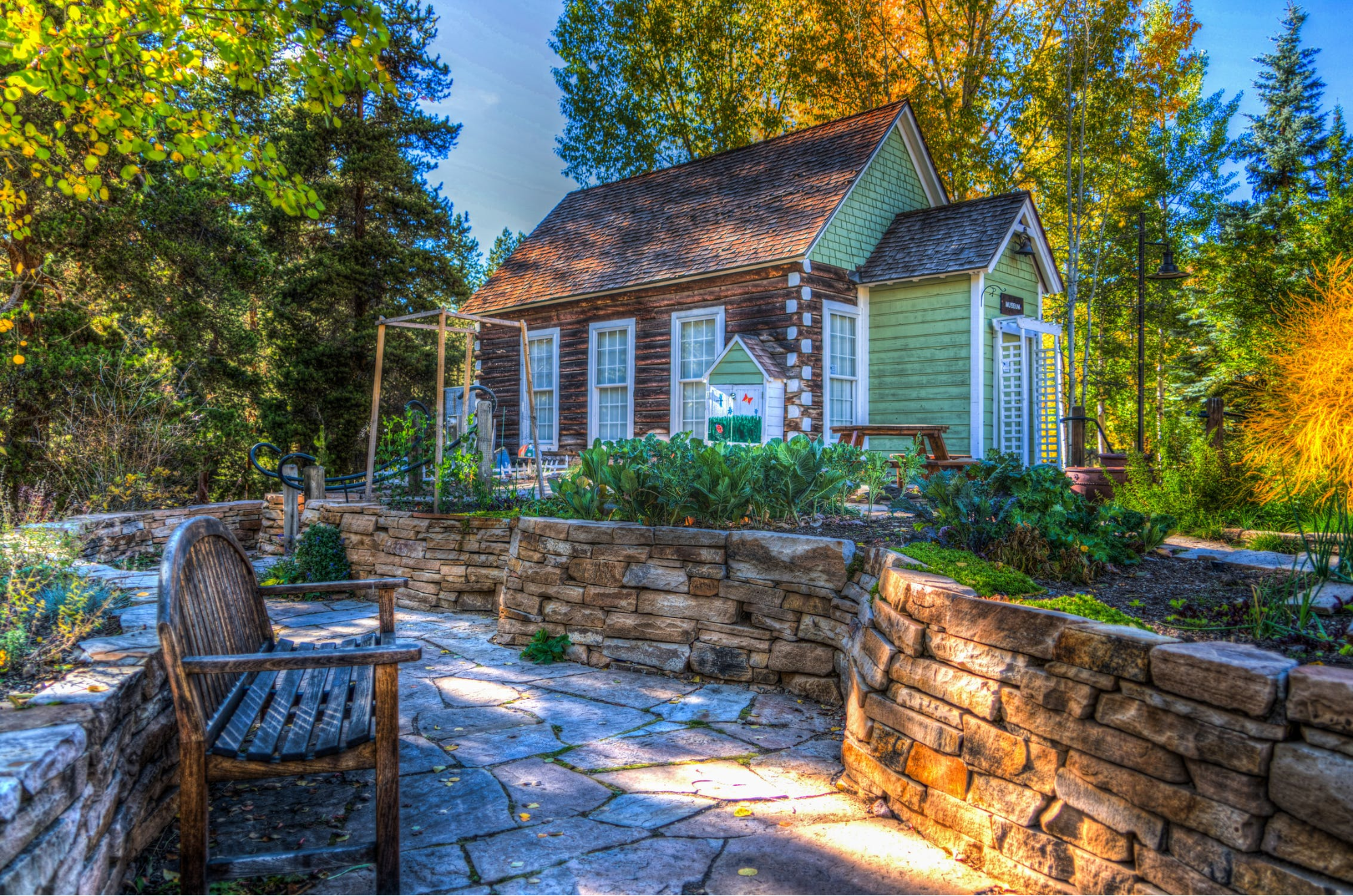
10 Tips for Designing a Small or Tiny ICF Home

A small (400 to 1000 square feet) or tiny (less than 400 square feet) insulated concrete form (ICF) home is energy-efficient, durable, and healthy. A small ICF house also saves homeowners money and time. A small home generates low monthly bills, takes less time to clean and maintain, and is better for the environment than a more spacious home. A small house built with ICF is energy-efficient, safe, and affordable.
Many Homeowners Need Smaller, More Affordable Homes

Over the past 40 years, home size and price has increased in the United States (U.S.). Consequently, today’s homeowners pay more to own and maintain their houses than they did in the 1970s. Furthermore, according to the U.S. Bureau of Labor Statistics’ Consumer Expenditure Survey, in recent years the biggest expense across all income levels is housing (30 percent) followed by food (13 percent), healthcare (9 percent), and energy (9 percent). A big and expensive home takes a large slice out of the budget of many of today’s homeowners.
Unfortunately, many of today’s homeowners are living in homes that are too big and expensive for their budget. In addition, almost half of today’s households don't have enough savings to handle a $400 emergency, and 78 percent are living paycheck to paycheck. Many homeowners in large, costly houses risk financial distress, particularly if they lack monetary reserves. An affordable, small home is a solution to many of today’s financially-over-extended homeowners.
A Thoughtfully Designed Small Home Reduces Housing Costs

A carefully designed small home is comfortable, beautiful, functional and interesting. However, the essential goals of a small home are to reduce a homeowner’s mortgage, utilities, and maintenance expenses. An added benefit of a small house is it simplifies the owner’s life and lowers their stress by ridding them of unnecessary possessions and responsibilities. A thoughtfully designed and built small home is charming, practical and good for the environment.
10 Tips for Designing an ICF Small or Tiny Home
1. A tight building envelope is essential to the design of a small or tiny home.
A tight building envelope minimizes air and moisture infiltration and is crucial to creating an energy-efficient house. Essential design elements of a tight building envelope are continuous insulation and application of an air and moisture barrier. A tight building envelope must also include energy efficient windows, skylights, and doors suitable to the home’s climate zone. Critical to a small, energy-efficient home design is a tight building envelope that minimizes air and moisture infiltration.
2. Durability is critical to the design of a small home.
A sustainable small house design uses durable materials. Durable materials are sustainable because they do not degrade or rot and they are resistant to natural disasters like tornadoes, hurricanes, and fires. Over time, durable products save homeowner’s both money and time in rebuilding, maintaining, and repairing.
3. Fox Blocks ICFs are an ideal product for a small or tiny home.

Fox Blocks create a small home with a tight building envelope that is energy-efficient, moisture-resistant, and durable.
- Fox Blocks are energy-efficient (R-value of 23+) and exceed ASHRAE/ANSI 90.1 energy code requirements. Small homes built with ICF exterior walls typically require 44 percent less energy to heat and 32 percent less energy to cool than similar wood-framed houses.
- The high thermal mass of Fox Blocks contributes towards an energy-efficient small home. High thermal mass products absorb and store heat energy and help stabilize temperature shifts within the home by reducing the rate of heat transfer.
- Fox Blocks provide a solid continuous monolithic concrete wall have a perm rating of less than 1.0 that controls moisture intrusion. Moisture accumulation can lead to mold, which degrades a structure’s integrity and is unhealthy to the occupants of the home.
- Fox Blocks are not prone to termite damage because they lack organic material, which termites eat.
- Fox Blocks are disaster-resistant: Fox Blocks is steel reinforced concrete that can withstand severe winds exceeding 200 MPH and projectile debris moving over 100 MPH.
- Fox Blocks are fire-resistant. Fox Blocks have a fire-resistance rating of 4-hours for the 6-inch blocks and 2-hours for the 4-inch blocks (ASTM E119).
4. Proper site orientation of a small home.
Proper site orientation of a small home is essential for taking advantage of the sun’s energy. For instance, the north-south orientation lessens direct sunlight during the summer (which reduces cooling demands) and maximizes sunlight during the winter (which lessons heating demands).
5. The cool roof of a small home.
A cool roof keeps a small home cool by shielding against solar heat gain. Cool roof products include low thermal mass materials like tiles and slate that are reflective or have light colored pigments that throw back the sun’s rays.
6. Renewable energy for a small home.

The design of a small, energy-efficient home should aim to generate as much energy as it uses by installing renewable energy measures, like solar photovoltaic (PV) panels. Renewable energy sources can significantly reduce, if not eliminate a small or tiny home’s energy bills.
7. Usable outdoor spaces for a small home.
The design of a small home should effortlessly connect the outdoor spaces to the indoors. Outdoor spaces should take advantage of the sun and prevailing winds, which will draw the home’s occupants towards the porches, patios, and decks.
8. Efficient, dual-purpose spaces of a small home.
The design of a small or tiny home should create dual-purpose spaces with fold-out tables, built-in bookshelves, a Murphy bed, and more.
9. Room planning for a small home.
The design of a small or tiny home should minimize the space of the bedrooms and baths and maximize the areas used during the day. Also, the plan should reduce walls, which take up floor space, with open room design.
10. Ceilings of a small home.

High ceilings with skylights add volume and light to a small home. In some cases, a loft fits naturally in the extra volume.
Building an ICF small home creates an energy-efficient home that is durable, healthy, and green. An affordable small ICF home saves homeowners money on building costs, utilities, maintenance, and repairs.
A small ICF home saves homeowners time because it is quicker to clean and maintain than a larger home. New homeowners interested in ridding themselves of unnecessary possessions and responsibilities and saving both money and time should consider downsizing to a small or tiny Fox Block ICF home.